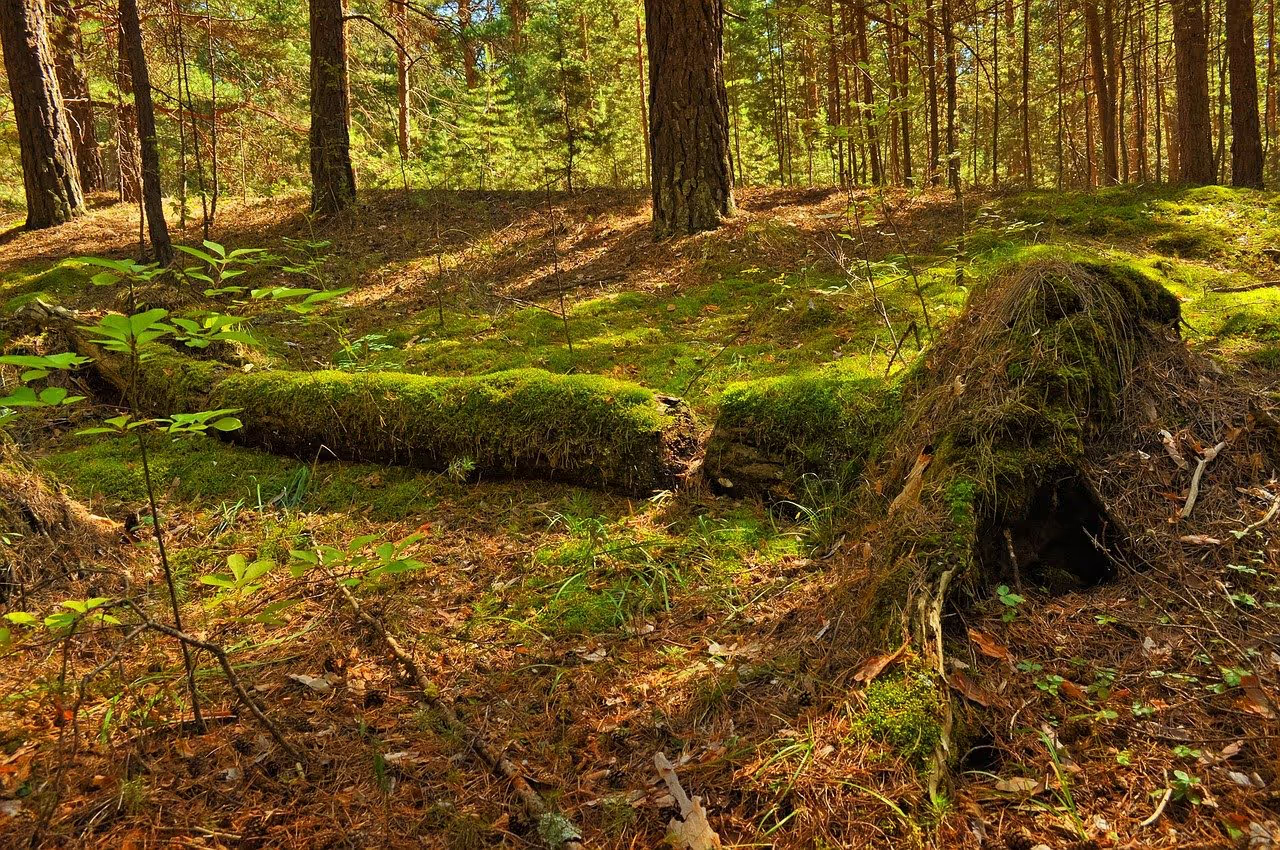When a Tree Falls in the Forest…What Happens Next?



Forests are “complex, dynamic communities” made up of many different organisms that all interact, directly and indirectly, with each other. We can see this interconnectivity with the death of a single tree.
In a forest, death is a part of daily life–and the death of a single tree is an important process that greatly affects the surrounding ecosystem.
The death of a tree can happen quickly, maybe getting snapped in two during a windstorm. More often than not, though, trees die slowly. For example, snow and ice can weigh down a large limb, and eventually cause it to break off. This creates an open wound that bacteria and fungi can inhabit.
Fungi may inhabit a tree for a long time, but fungi often don’t become active until the tree becomes old or stressed. Fungi spread by extending their branches, called “hyphae,” along a dying or dead tree. Enzymes are released and allow the fungus to feed by breaking down the wood. Now, the same fungi that contributed to the death of the tree will play a part in its “rebirth.”
Detritivores, like slugs, beetles, woodlice, and millipedes, also feed on the tree, exposing it to moisture and expediting the decomposition process. Woodpeckers drill into the tree, hunting the detritivores. Smaller birds like wrens and chickadees build nests in the tree’s cavities. Down below, larger animals create dens in the crevices of the tree’s trunk and upturned roots.
Once rotten wood starts mixing with soil, earthworms will come to the feast. The same nutrients that the tree relied on during its life are spread into the surrounding soil, making it richer for other plants and younger trees.
In addition to creating a more nutrient rich soil, the death of a tree leaves an empty space in the overstory, allowing more light to shine through and reach the plant life below. On the ground, other trees and plants that once surrounded the tree now have more space for their roots to expand. The additional light, space, and nutrients in the soil create the perfect growing conditions. Wildflowers, ferns, and new trees take root.Over time, the cycle of life, death, and regeneration will allow for different sizes, ages, and species of trees and plants to thrive. In fact, the area where a tree decomposes will eventually contain up to four times as much biomass as a living tree. Diverse forests like this become havens for a variety of birds and wildlife species. They are also able to store more carbon and are better able to adapt to a changing climate.
Sources
“If a Tree Falls in the Forest…” The Overton Park Society. https://overtonpark.org/2013/04/24/if-a-tree-falls-in-the-forest/. Accessed 30 January 2022.
Tapper, Ethan. “Death in the Forest: The Profound Mortality of Trees.” The Milton Independent. https://www.miltonindependent.com/opinion/editorials/death-in-the-forest-the-profound-process-of-tree-mortality/article_3b7550fc-10c4-5be1-aa25-13f44c26ceb8.html. Accessed 30 January 2022.
“What Happens to Trees that Fall in a Forest?” Project Learning Tree. https://www.plt.org/educator-tips/what-happens-trees-fall-forest/. Accessed 30 January 2022.
Photo: Larisa-K on Pixabay
© Holly Duffy, January 2022
Touch whale bones, examine shipwreck artifacts and connect with the coast's living history.

Support our mission, get involved in educational programs, or contribute through donations and volunteering.